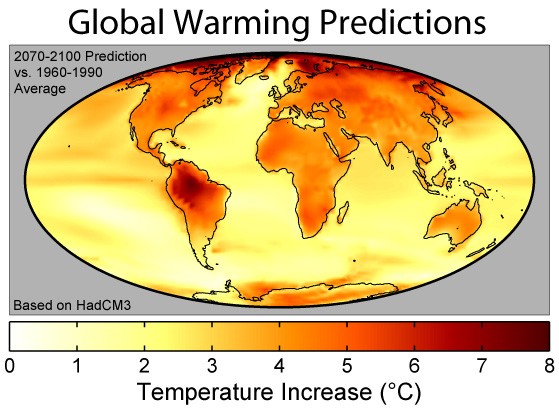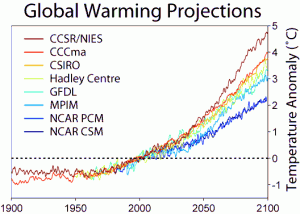Plugging the Leaks in Climate Models
Independent quality controls for climate models are crucial for the quality of future climate change predictions. Not all models are equally good and should be utilized in climate impact studies for such things as crop yield and hydrology that are produced for far-reaching decision-making.

By Beate Liepert
Clouds and water vapor account for only a tiny fraction of all water on Earth, but this moisture in the atmosphere is crucially important for the distribution of vegetation zones, the productivity of crop yields, and to replenishing drinking water reservoirs. This is the case because in the atmosphere, clouds and water vapor transport a vast amount of water from oceans to land, where it falls out as precipitation.
Scientists generally agree that rising temperatures in the coming decades will affect this cycling of water. And most climate models successfully simulate a global intensification of rainfall. However, physical models often disagree with direct observations, and from one model to the next on the amount of the intensification and the global distribution of moisture that defines dry and wet regions.
In a paper published in Environmental Research Letters, my coauthor Mike Previdi (of Lamont-Doherty Earth Observatory) and I investigate these model discrepancies. We developed a “quality control test” for climate models that is solely based on physical principles. (See this story on the Environmental Research Web)
We take results from existing climate simulations and retroactively calculate the global atmospheric moisture budget in these models. This means we sum up cloud water, water vapor, rainfall, and evaporation changes for each month in each location of the globe. A model is physically correct if the global budget is closed. A model is imperfect if negative imbalances, “leaks,” or positive imbalances, “floods,” remain.
This approach of “self-consistency” of a model is in contrast to previous studies where scientists performed model “reality checks” of comparisons with uncertainty prone observations. Eighteen state-of-the-art climate models as described in the United Nations 4th Assessment Report (IPCC-AR4) of the Intergovernmental Panel on Climate Change are included in is study.
My co-author and I find that most models predict an increase in atmospheric moisture transported towards land in the course of the 21st century. This moisture transport increase is due to the amplifying contrast of land versus ocean warming with increasing greenhouse gas concentrations.

Some models, however predict radically opposite results, and we show that these few models have large biases in the moisture budget, which strongly affects the multi-model mean. The multi-model mean is the average result of all models and is often used in climate science and climate impact studies as “best predictor,” since it smoothes over individual model inconsistencies (Nature 482, 286, 16 February 2012, doi:10.1038/482286a). Some model leaks are so big that they surpass the anticipated global precipitation changes in the 21st century. The multi-model mean that is biased by a few, has an average “leak” of the size of the discharge of the Mississippi River.
With our self-consistency test we were able to identify the outliers and narrow the prediction uncertainty. It is now expected that in this century, the atmosphere will increasingly transport moisture towards land by the size of the river Nile. We expect a model uncertainty range of 1 to 13 percent of increase.
It is difficult for models to keep track of the small amount of water contained in the atmosphere (a thousandth of a percent of the total water on Earth). On the other hand, it is crucially important to plug leaks in physical climate models, because water in the atmosphere plays an important role in the energy balance of the Earth. A bit fewer clouds, due to the leaks, can let extra solar energy reach the Earth’s surface and heat up the planet. This spurious extra energy in leaky models constitutes a “ghost” forcing of climate. We calculate that the ghost forcing in the IPCC models ranges from -1 to +6 watts per square meter, a forcing of the size of non-carbon dioxide greenhouse gases.
These results show that independent quality controls for climate models are crucial for the quality of future climate change predictions. Not all models are equally good and should be utilized in climate impact studies for such things as crop yield and hydrology that are produced for far-reaching decision-making.
Climate research institutions are under pressure to build faster, more complex models that incorporate not only the physical climate, but also ecosystem processes and even economic impacts. Quality controlling should accompany these developments of bigger and faster models. Pressure of political deadlines or the need for producing new results in order to get funding often hamper these attempts at thorough testing.
Beate Liepert is an adjunct research scientist at Lamont-Doherty Earth Observatory and currently with NorthWest Research Associates in Washington State. Her interests, she says, are “in why and how climate changes, why our Earth can be a ‘hothouse’ and a ‘snowball’ and how we human beings change our Earth’s climate in a way that may affect our daily lives. I pioneered research on ‘global dimming.’ “
